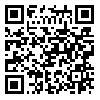1. Aitken, K.S., P.A. Jackson and C.L. Mclntyre. 2006. Quantitative trait loci identified for sugar related traits in a sugarcane (Saccharum spp.) cultivar × Saccharum officinarum population. Theor Appl Genet, 112: 1306-1317. [
DOI:10.1007/s00122-006-0233-2]
2. Aitken, K.S., S. Hermann, K. Krno, G.D. Bonnett, L.C. McIntyre and P.A. Jackson. 2008. Genetic control of yield related stalk traits in sugarcane. Theoretical and Applied Genetics, 117:1191–1202. [
DOI:10.1007/s00122-008-0856-6]
3. Akhter, J., S. Islam, A. Sajib, N. Ashraf, S. Hapue and H. Khan. 2008. Microsatellite markers for determining genetic identities and genetic diversity amongjute cultivars. Australian Journal of Crop Science, 1: 97-107.
4. Anusonpornpurm, S., R. Lersrutaiyotin, C. Rattanakreetakul, A. Thamchaipenet and P. Weerathaworn. 2008. Identifying QTLs for fiber content and agronomic characters in sugarcane using AFLP markers. Kasetsart Journal: Natural Science, 42: 668-675.
5. Barat Shoushtari, M., S. ahmadian and Gh. Asfiyae. 2007. Sugarcane in Iran. Vol 1, Publish 1, Aeezh Press, Tehran, 336 pp.
6. Bassam, B., J.G. Caetano-Anolles. and P.M. Gressho. 1991. Fast and sensitive silver staining of DNA in polyacrylamide gels. Anal. Biochemestry. 196: 80-83. [
DOI:10.1016/0003-2697(91)90120-I]
7. Cordeiro, G.M., G.O. Taylor and R.J. Henry. 2000. Characterization of microsatellites markers from sugarcane (Saccharum spp.), a highly polyploidy species, Plant of Science, 155:161-168. [
DOI:10.1016/S0168-9452(00)00208-9]
8. Dellaporta, S.L., J. Wood and J.B. Hicks. 1983. A plant DNA mini preparation: version II. Plant Molecular Biology Reporter, 1: 19-21. [
DOI:10.1007/BF02712670]
9. D'Hont, A. and J.C. Glaszman. 2001. Sugarcane genome analysis with molecular markers, a first decade of research. Proceedings International Society of Sugar Cane Technologists, 24: 556-559.
10. Flavell, A.J., E. Dunbar, R. Anderson, S.R. Pearce, R. Hartley and A. Kumar. 1992. Ty1-copia group retrotransposons are ubiquitous and heterogeneous in higher plants. Nucleic Acids Research, 20: 3639-3644. [
DOI:10.1093/nar/20.14.3639]
11. Franco, F.P., E.G. Freitas, C.T.S. Dias, H.P. Hoffmann, M.A.S. Vieira and M.S. Carneiro. 2008. Canonical correlation of agroindustry traits and molecular in sugarcane cultivars. Resumos do 54º Congresso Brasileiro de Genetica, ISBN, 978-85-89109-06-2.
12. Gebhardt, C., A. Ballvora, B. Walkemeier, P. Oberhagemann and K. Schuler. 2004. Assessing genetic potential in germplasm collections of crop plants by marker-trait association: A case study for potatoes with quantitative variation of resistance to late blight and maturity type. Molecular Breeding, 13: 93-102. [
DOI:10.1023/B:MOLB.0000012878.89855.df]
13. Govindaraj, P., R. Ramesh, C. Appunu, S. Swapna and P.J. Priji. 2012. DNA fingerprinting of subtropical sugarcane (Saccharum Spp.) genotypes using sequence tagged microsatellites sites (STMS) markers. Division of Crop Improvement, Sugarcane Breeding Institute, Coimbatore – India, Plant Archives, 12: 347-352.
14. Hoarau, J.Y., L. Grivet, B. Offmann, L.M. Raboin, J.P. Diorflat, J. payet, M. Hellmann, A. D'Hont and J.C. Glaszmann. 2002. Genetic dissection of a modern sugarcane cultivar (Saccharum ssp.).II. Detection of QTL for yield components. Theor Appl |Genet, 105: 1027-1037.
15. Hoarau, J.Y., S. Glaucia, A. D'Hont, M. Menossi, L.R. Pinto, A.P. Souza, L. Grivet, C.F.M. Menck, E.C. Ulian and M. Vincentz. 2007. Sugarcane: A tropical crop with a highly complex genome. In: Morot-Gaudry Jean-François (ed.), Lea P. (ed.), Briat Jean-François (ed.). Functional plant genomics. 481-499 pp., Enfield: Science Publishers.
16. Jackson, P.A. 2005. Breeding for improved sugar content in sugarcane. Field Crops Research in press, 92: 277-290. [
DOI:10.1016/j.fcr.2005.01.024]
17. Jordan, D.R., R.E. Casu, P. Besse, B.C. Carroll, N. Berding and C.L. McIntyre. 2004. Markers associated with stalk number and suckering in sugarcane with tillering and rhizomatousness QTLs in sorghum. Genome, 47: 988-993. [
DOI:10.1139/g04-040]
18. Lingle, S.E. and J.M. Dyer. 2004. Polymorphism in the promoter region of the sucrose synthase-2 gene of Saccharum genotypes. Journal American Society Sugar Cane Technologists, 24: 241-249.
19. Martinez, L., P. Caragnaro, R. Masuekki and J. Rodriguez. 2003. Evaluation of diversity among Argentine grapevine (Vitis vinifera L.) varieties using morphological data and AFLP markers. Molecular Biology and Genetics. 6: 241-250. [
DOI:10.2225/vol6-issue3-fulltext-11]
20. Mateescu, R.G, Z. Zhang, K. Tsai, J. Phavaphutanon, N.I. Burton Wursten, G. Lust, R. Quaas, K. Murphy, G.M. Acland, R.J. Todhunter. 2005. Analysis of allele fidelity, polymorphic information content and density of microsatellites in a genome-wide screening for hip dysplasia in a crossbreed pedigree. Oxford Journals, 96: 847-853. [
DOI:10.1093/jhered/esi109]
21. Ming, R., S.C. Liu, J.E. Bowers, P.H. Moore, J.E. Irvine and A.H. Paterson. 2002. Construction of a Saccharum consensus genetic map from two interspecific crosses. Crop Science, 42: 570-583. [
DOI:10.2135/cropsci2002.0570]
22. Moghaddam, B., S.A. Mohammadi and M. Aghaei Sarbarzeh. 2009. Introduction to multivariate statistical methods. Vol 1, Publish 2, Parivar Press, Tabriz. 280 pp.
23. Parker, G.D., P.N. Fox, P. Langridge, K. Chalmers, B. Whan and P.F. Ganter. 2002. Genetic diversity within Australian wheat breeding programs based on molecular and pedigree data. Euphytica, 124: 293-306. [
DOI:10.1023/A:1015725522441]
24. Pinto, L.R., D.C. Leite, T.M. Favero, M.M. Pastina, A.A.F. Garcia, D. Perecin, B.S. Goncalves, S. Creste, M.A. Xavier, M.A.P Bidoia and M.G.A. Landell. 2011. Identification of microsatellite marker associated with yield components and quality parameters in sugarcane. International Sugar Journal, 113: 140-144.
25. Reffay N., P.A. Jackson, K.S. Aitken, J.Y. Hoarau, A. D’Hont, P. Besse and C.L. McIntyre. 2005. Characterisation of genome regions incorporated from an important wild relative into Australian sugarcane. Molecular Breeding, 15: 367-381. [
DOI:10.1007/s11032-004-7981-y]
26. Sanguinetti, C.J., E. Dias Neto and A.J.G. Simpson. 1994. Rapid silver staining and recovery of PCR products separated on polyacrylamide gels. Biotechniques, 17: 915-919.
27. Singh, R.K., S.K. Mishra, S.P. Singh, N. Mishra and M.L. Sharma. 2010. Evaluation of microsatellite markers for genetic diversity analysis among sugarcane species and commercial hybrids. Australian Journal of Crop Science, 4: 115-124.
28. Singh, R.K., S. Srivastava, S.P. Singh, M.L. Sharma, T. Mohopatra, N.K. Singh and S.B. Singh.2008. Identification of new microsatellite DNA markers for sugar and related traits in sugarcane. Sugar Tech, 10: 327-333. [
DOI:10.1007/s12355-008-0058-1]
29. Vandana, V., K. Ashok, Dhawan and V.K. Gupta. 2010. PCR Primers for identification of high sucrose Saccharum genotypes. Physiology and Molecular Biology of Plants, 16: 107-111. [
DOI:10.1007/s12298-010-0002-1]






